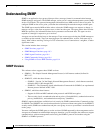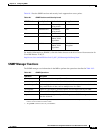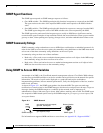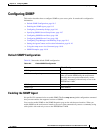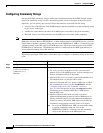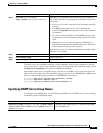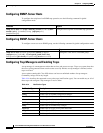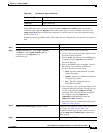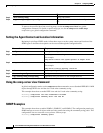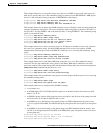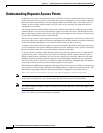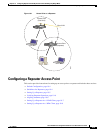
18-8
Cisco IOS Software Configuration Guide for Cisco Aironet Access Points
OL-11350-01
Chapter 18 Configuring SNMP
Configuring SNMP
Configuring SNMP-Server Hosts
To configure the recipient of an SNMP trap operation, use the following command in global
configuration mode:
Configuring SNMP-Server Users
To configure a new user to an SNMP group, use the following command in global configuration mode:
Configuring Trap Managers and Enabling Traps
A trap manager is a management station that receives and processes traps. Traps are system alerts that
the access point generates when certain events occur. By default, no trap manager is defined, and no
traps are issued.
Access points running this Cisco IOS release can have an unlimited number of trap managers.
Community strings can be any length.
Table 18-4 describes the supported access point traps (notification types). You can enable any or all of
these traps and configure a trap manager to receive them.
Command Purpose
snmp-server host host [traps | informs][version {1 | 2c | 3 [auth |
noauth | priv]} ] community-string [udp-port port]
[notification-type]
Configures the recipient of an SNMP trap operation.
Command Purpose
snmp-server user username [groupname remote ip-address
[udp-port port] {v1 | v2c | v3 [encrypted] [auth {md5 | sha}
auth-password [priv des56 priv password]] [access access-list]
Configures a new user to an SNMP group.
Table 18-4 Notification Types
Notification Type Description
authenticate-fail Enable traps for authentication failures.
config Enable traps for SNMP configuration changes.
deauthenticate Enable traps for client device deauthentications.
disassociate Enable traps for client device disassociations.
dot11-qos Enable traps for QoS changes.
entity Enable traps for SNMP entity changes.
rogue-ap Enable traps for rogue access point detections.
snmp Enable traps for SNMP events.
switch-over Enable traps for switch-overs.





